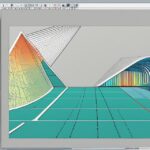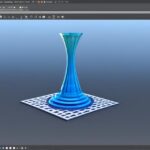Table of Contents
When it comes to web development, the worlds of coding and design often collide. In today’s digital landscape, web developers need to have a solid understanding of both coding and design principles to create visually appealing and functional websites. Fortunately, there are a plethora of tools available that cater to the needs of web developers, bridging the gap between coding and design.
One of the most popular sets of tools used in web development is Adobe’s suite of products. Adobe offers a range of software, including Photoshop and Illustrator, that are not only used by artists but also by developers. These tools enable developers to create stunning visuals, manipulate images, and craft user interfaces that seamlessly integrate with coding.
Adobe XD, in particular, has gained popularity among web developers as it allows designers to create complete digital experiences without extensive coding knowledge. With Adobe XD, developers can design websites and mobile applications, prototype interactions, and even generate code snippets to simplify the development process. This tool has become a gateway for many front-end developers to start learning coding and gain a deeper understanding of how design influences the development process.
What sets Adobe’s tools apart is their extensibility. Developers can customize workflows and integrate with other tools, further enhancing their ability to merge coding and design seamlessly. By considering design from the beginning, developers can make informed decisions that positively impact the user experience and overall functionality of the website or application they are building.
In conclusion, the intersection of coding and design tools for web developers is crucial in today’s digital landscape. Adobe’s suite of products, including Photoshop, Illustrator, and Adobe XD, provide developers with the necessary tools to create visually appealing and functional websites. By leveraging these tools, developers can bridge the gap between coding and design, resulting in better user experiences and more efficient development processes.
The Impact of AI on Web Development
AI has revolutionized web development, transforming the way websites are built and enhancing user experiences. The integration of AI technology has brought automation, increased functionality, and personalization to the forefront of web development.
AI-powered tools play a crucial role in streamlining web development processes. By automating routine tasks, developers can save valuable time and focus on more critical aspects of their projects. This includes tasks such as generating code for repetitive sections or suggesting optimizations for improved performance.
One notable application of AI in web development is the emergence of AI-powered design assistants. These assistants can generate responsive templates and layouts based on user requirements, eliminating the need for manual coding and design work. This allows developers to create visually stunning and user-friendly websites with ease.
AI-driven analytics also contribute to the success of web development projects. By gathering and analyzing user behavior data, developers can gain valuable insights into how visitors interact with their websites. This information can then be used to personalize content, make informed design decisions, and provide tailored recommendations to users.
Overall, AI empowers web developers to create dynamic, user-friendly, and highly optimized websites. With AI technology at their disposal, developers can automate tasks, improve functionality, and create personalized experiences for their users.
“AI has revolutionized web development, transforming the way websites are built and enhancing user experiences.”
Advantages of AI in Web Development
AI in web development offers several key advantages:
- Automation of routine tasks, reducing development time
- Enhanced website functionality and user experience
- Improved search engine visibility
- Efficient code generation and bug identification
- Personalized content and recommendations
Disadvantages of AI in Web Development
Despite the benefits, there are some considerations when using AI in web development:
- Dependency on AI tools and technology
- Complex integration and customization
- Ensuring the accuracy and reliability of AI-generated code
- Potential limitations of AI algorithms
- Overreliance on AI may hinder creativity and innovation
| Advantages | Disadvantages |
|---|---|
| Automation of routine tasks | Dependency on AI tools and technology |
| Enhanced website functionality and user experience | Complex integration and customization |
| Improved search engine visibility | Ensuring the accuracy and reliability of AI-generated code |
| Efficient code generation and bug identification | Potential limitations of AI algorithms |
| Personalized content and recommendations | Overreliance on AI may hinder creativity and innovation |
No-Code Development: Bridging the Gap between Design and Technology
The emergence of No-Code Development platforms has revolutionized the way non-programmers create functional applications without the need for complex coding. These user-friendly platforms leverage intuitive visual interfaces, drag-and-drop features, and pre-built templates to make app development more accessible and efficient for individuals with limited coding knowledge. With No-Code tools, anyone can turn their creative ideas into reality, promoting inclusivity in the realm of software development.
In the realm of No-Code Development, the fusion of design and technology plays a critical role. Designers can take visual inputs and translate them into working applications through user-friendly interfaces, bringing their creative vision to life. Technology advancements enable No-Code platforms to automate coding processes, eliminating the technical barriers that may have hindered non-programmers in the past. This convergence of design and technology opens up new possibilities, empowering individuals to create custom applications tailored to their specific needs.
One of the key advantages of No-Code Development is its ability to bridge the gap between design and technology. Traditionally, designers would need to rely on developers to bring their vision to fruition, which often led to misinterpretations and time-consuming iterations. However, with No-Code platforms, designers have the power to directly implement their ideas and iterate on designs rapidly. This seamless collaboration between design and technology results in more efficient and effective app development processes.
To highlight the importance of design in No-Code Development, let’s consider a hypothetical scenario in which a designer wants to create an e-commerce mobile app. Using No-Code tools, the designer can utilize intuitive templates, drag-and-drop functionality, and pre-configured components to build the app’s interface. This allows for quick visual prototyping and the ability to iterate on the design until it meets the desired aesthetic and functionality. The designer’s creative vision is seamlessly translated into a functional application, eliminating the need for complex coding.
No-Code Development platforms bridge the gap between design and technology, empowering non-programmers to create functional applications through intuitive visual interfaces and pre-built templates.
- No-Code platforms enable non-programmers to create functional applications without coding knowledge.
- Visual interfaces, drag-and-drop features, and pre-built templates simplify the app development process.
- The convergence of design and technology in No-Code enables faster and more efficient development.
- Designers can directly implement their vision, reducing misinterpretations and iterations.
- No-Code Development democratizes software development and brings creative possibilities to all.
The Impact of No-Code Development on the Future of Software Creation
No-Code Development is shaping the future of software creation by making it more accessible and efficient for individuals across various industries. As technology continues to advance and No-Code platforms evolve, we can expect even greater simplification of the app development process. Advancements in user interface design, visual programming environments, and automated backend services will further empower individuals to bring their ideas to life with ease.
No-Code Development also presents challenges that need to be addressed to fully unlock its potential. While pre-built templates and drag-and-drop functionality offer convenience, they may limit customization options. Complexity can also arise when handling more intricate application requirements. However, as the No-Code Development field continues to grow, innovative solutions will emerge to overcome these challenges, ensuring that non-programmers have the necessary tools to create robust and personalized applications.
| No-Code Development Advantages | No-Code Development Challenges |
|---|---|
| Increased accessibility for non-programmers. | Potential limitations in customization. |
| Efficient development through visual interfaces and drag-and-drop features. | Complexity when dealing with intricate application requirements. |
| Seamless collaboration between designers and developers. | Scaling limitations for more complex projects. |
| Empowerment of creativity and ideation for all. | Dependency on platform providers for updates and enhancements. |
No-Code Development represents a significant evolution in the intersection of design and technology. By eliminating the necessity for extensive coding knowledge, these platforms enable individuals with creative ideas to turn them into functional applications. The fusion of design and technology in No-Code Development democratizes software creation and unlocks immense creative possibilities. As No-Code tools continue to advance, we can expect a future where anyone can unleash their creativity and contribute to the digital landscape.
The Future of Design and Technology in No-Code Development
The future of No-Code Development holds great potential for simplifying software creation and operation. With advanced interfaces, visual programming environments, and automated backend services, developing apps and websites becomes much easier. No-Code tools continue to evolve, empowering individuals of all backgrounds to bring their ideas to life effortlessly.
However, as with any technology, there are challenges to overcome. Limited customization options and the complexity of certain projects can be roadblocks for some. Nonetheless, innovative solutions are already emerging to address these issues and provide more flexibility in No-Code Development.
“Advanced interfaces, visual programming environments, and automated backend services make it easier to develop apps and websites.”
The intersection of design and technology in No-Code Development has the potential to revolutionize digital creation and foster inclusivity. By combining the best of both worlds, designers can craft visually stunning and functional applications, while technology advancements automate coding processes, making development accessible to all.
Key Advancements in No-Code Development
- Advanced interfaces that simplify the development process
- Visual programming environments that enable intuitive design and functionality
- Automated backend services that handle complex processes
These advancements not only make No-Code Development more efficient but also expand the possibilities for creators of all skill levels. Designers can unleash their creativity without being limited by technical barriers, while developers can focus on refining the functionalities of the application.
Let’s take a closer look at how the fusion of design and technology in No-Code Development is shaping the future:
| Benefits | Challenges |
|---|---|
| Increased accessibility for non-technical individuals | Limitations in customization |
| Faster development cycles | Complexity in handling certain functionalities |
| Democratization of software development | Learning curve for mastering No-Code platforms |
| Streamlined collaboration between designers and developers | Dependency on platform updates and support |
Conclusion
No-Code Development is revolutionizing the intersection of design and technology, empowering non-technical individuals to create functional and visually appealing software. By eliminating the need for coding knowledge, No-Code platforms have democratized software development and accelerated the process of bringing ideas to life.
The fusion of design and technology in No-Code platforms has paved the way for a future where anyone can unleash their creativity. With intuitive visual interfaces, drag-and-drop features, and pre-built templates, individuals can now turn their design concepts into working applications without the complexities of traditional coding. This evolution in the design and technology landscape has made software development more accessible and inclusive.
While No-Code tools introduce both challenges and opportunities, they have opened up a world of possibilities for individuals without technical backgrounds. These tools have streamlined the process of ideation to launch, enabling creators to iterate quickly and efficiently. They have transformed the development landscape, making it possible for non-technical individuals to actively participate in the creation of software.
Looking into the future, the design and technology community can expect further advancements in No-Code Development. Advanced interfaces, visual programming environments, and automated backend services will continue to simplify app and website development. These developments will empower individuals to bring their ideas to life with ease, revolutionizing the digital creation process and fostering inclusivity within the industry.
FAQ
How are Adobe’s tools used in web and mobile application development?
Adobe’s tools, such as Photoshop and Illustrator, are used by both artists and developers in web and mobile application development.
What is the role of Adobe XD in web development?
Adobe XD allows designers to create complete digital experiences without coding knowledge.
How do Adobe products impact the decisions made during development?
Adobe products serve as a gateway for many front-end developers to start learning coding. Adobe’s extensible products allow users to customize workflows and integrate with other tools. Developers now consider design from the beginning, impacting the decisions made during development.
How has AI transformed web development?
AI has transformed web development by automating tasks, enhancing website functionality, and personalizing user experiences.
What are some examples of AI tools in web development?
AI tools can automate routine tasks, reduce development time, and boost website visibility on search engines. AI-powered design assistants can generate responsive templates, while AI code assistants can suggest optimizations and identify bugs. AI-driven analytics provide insights into user behavior, leading to personalized content and recommendations.
How do No-Code Development platforms work?
No-Code Development platforms leverage visual interfaces, drag-and-drop features, and pre-built templates to allow non-programmers to create functional applications without coding.
How does No-Code Development democratize software development?
The fusion of design and technology in No-Code Development has democratized software development and opened up creative possibilities. Design plays a crucial role in translating visual inputs into working applications.
What advancements are driving No-Code Development?
Technology advancements enable No-Code platforms to automate coding processes and make development more accessible to all.
What is the future potential of No-Code Development?
The future of No-Code Development holds great potential for simplifying software creation and operation. Advanced interfaces, visual programming environments, and automated backend services make it easier to develop apps and websites. No-Code tools will continue to evolve, enabling anyone to bring their ideas to life with ease.
What challenges does No-Code Development face?
No-Code tools introduce both challenges and opportunities, but they pave the way for a future where anyone can unleash their creativity and bring their ideas to life. It is an exciting evolution in the design and technology landscape.













